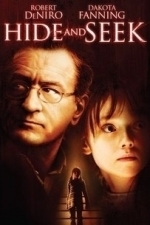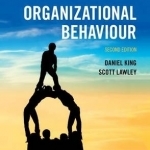
Organizational Behaviour
Book
Organizational behaviour affects all of us, every single day. But do your students struggle to see...
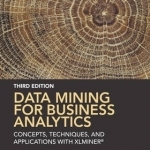
Data Mining for Business Analytics: Concepts, Techniques, and Applications with XLMiner
Galit Shmueli, Nitin R. Patel and Peter C. Bruce
Book
Data Mining for Business Analytics: Concepts, Techniques, and Applications in XLMiner(R), Third...
Hazel (1853 KP) rated Birds Art Life Death: A Field Guide to the Small and Significant in Books
May 23, 2017
There comes a time when novelists, as with any creative professional, become unmotivated or at a loss as to what to write about – writer’s block. Such an occurrence happened to children’s novelist, Kyo Maclear. Through the work of her songwriter husband, Maclear discovers a musician struggling with the demands of his career in a competitive world, causing anxiety and depression. In order to distance himself from the stresses of his employment, the musician finds solace in bird watching. Intrigued as to what prompted his ardent interest in birds, Maclear tags along with him for a year, and thus, Birds Art Life Death: A Field Guide to the Small and Significant was born.
To preempt any confusion, despite what the title may suggest, this book is not a field guide about birds. When Maclear began talking to the musician (who remains anonymous except for a mention in the acknowledgements), she was completely nescient on the subject of birds and had a lot to learn. Although some facts are stated in the narrative, Birds Art Life Death is more a reflective memoir of the author’s life. Using bird watching as a key example, Maclear explores the ways artists of all kinds have retreated from the pressures of everyday life in order to take time to appreciate the smaller, less celebrated aspects.
Bird watching, in particular, provides the musician and Maclear the opportunity to sit still (literally) and just be. Paying attention to the numerous habitats of the winged-creatures provides the author with a new outlook on life, and fodder to include in future works (hence this book). It also gives her the opportunity to reflect on her past, her parents – particularly her anticipatory grief toward her elderly father – her husband, and her sons. In fact, the author’s own life features as heavily as the bird watching trips she goes on.
Written in chronological order from winter through to autumn, Maclear’s knowledge of birds increases, as does her awareness of the world and life around her. However, her sequence of events is often interrupted by retrospective thought and additional research, which causes the book to head in too many directions at once. It is as though the author’s disorganized mind has been spilled onto the page for everyone to see.
It is clear, however, that Maclear has put an exceptional amount of time into researching the topic of birds. She does not regurgitate factual, mundane information about the species; instead she has delved deeper and from an artistic point of view, to discover so much more than an encyclopedic textbook would provide.
From a myriad of resources, Maclear has pulled out quotes from bird enthusiasts and creative individuals alike to emphasise the effects birds have had on people’s lives and artistic careers. Interestingly, many artists and authors have found the delicate creatures fascinating and included them in their works, for example: Leonardo da Vinci, Charles Dickens, William Faulkner and Iris Murdoch.
Birds Art Life Death is unlikely to increase your knowledge of birds or bird watching, however it may inspire you to take time out to explore and enjoy nature. Whether you are a creative individual in need of a break, or an office worker desperately wanting some fresh air, Maclear encourages you to step back from the trials of life and find pleasure in the little, but highly significant, facts of being.
Hazel (1853 KP) rated Birds Art Life Death: A Field Guide to the Small and Significant in Books
Dec 7, 2018
There comes a time when novelists, as with any creative professional, become unmotivated or at a loss as to what to write about – writer’s block. Such an occurrence happened to children’s novelist, Kyo Maclear. Through the work of her songwriter husband, Maclear discovers a musician struggling with the demands of his career in a competitive world, causing anxiety and depression. In order to distance himself from the stresses of his employment, the musician finds solace in bird watching. Intrigued as to what prompted his ardent interest in birds, Maclear tags along with him for a year, and thus, <i>Birds Art Life Death: A Field Guide to the Small and Significant</i> was born.
To preempt any confusion, despite what the title may suggest, this book is not a field guide about birds. When Maclear began talking to the musician (who remains anonymous except for a mention in the acknowledgements), she was completely nescient on the subject of birds and had a lot to learn. Although some facts are stated in the narrative, <i>Birds Art Life Death</i> is more a reflective memoir of the author’s life. Using bird watching as a key example, Maclear explores the ways artists of all kinds have retreated from the pressures of everyday life in order to take time to appreciate the smaller, less celebrated aspects.
Bird watching, in particular, provides the musician and Maclear the opportunity to sit still (literally) and just be. Paying attention to the numerous habitats of the winged-creatures provides the author with a new outlook on life, and fodder to include in future works (hence this book). It also gives her the opportunity to reflect on her past, her parents – particularly her anticipatory grief toward her elderly father – her husband, and her sons. In fact, the author’s own life features as heavily as the bird watching trips she goes on.
Written in chronological order from winter through to autumn, Maclear’s knowledge of birds increases, as does her awareness of the world and life around her. However, her sequence of events is often interrupted by retrospective thought and additional research, which causes the book to head in too many directions at once. It is as though the author’s disorganized mind has been spilled onto the page for everyone to see.
It is clear, however, that Maclear has put an exceptional amount of time into researching the topic of birds. She does not regurgitate factual, mundane information about the species; instead she has delved deeper and from an artistic point of view, to discover so much more than an encyclopedic textbook would provide.
From a myriad of resources, Maclear has pulled out quotes from bird enthusiasts and creative individuals alike to emphasise the effects birds have had on people’s lives and artistic careers. Interestingly, many artists and authors have found the delicate creatures fascinating and included them in their works, for example: Leonardo da Vinci, Charles Dickens, William Faulkner and Iris Murdoch.
<i>Birds Art Life Death</i> is unlikely to increase your knowledge of birds or bird watching, however it may inspire you to take time out to explore and enjoy nature. Whether you are a creative individual in need of a break, or an office worker desperately wanting some fresh air, Maclear encourages you to step back from the trials of life and find pleasure in the little, but highly significant, facts of being.
Gareth von Kallenbach (980 KP) rated Hide and Seek (2005) in Movies
Aug 14, 2019
In the new thriller Hide and Seek, audiences are introduced to Dr. David Callaway (Robert De Niro), a Psychologist who is struggling to help his daughter Emile (Dakota Fanning) after the suicide of her mother. David believes that the best option is to move from New York City to a quite area upstate where he can focus on being a father to his daughter, who has become withdrawn despite intense counseling.
Despite opposition from Emily’s therapist and family friend Katherine (Famke Janssen), David and Emily relocate to a scenic and quite location and hour from the city.
At first everything seems to be going well with the move and David meets an attractive young lady named Elizabeth (Elisabeth Shue), who watches over a little girl for another member of her family. Thinking that a friend will snap Emily from her state, David encourages Elizabeth to come to the house.
David is convinced the addition of a friend will encourage Emily to stop talking about an imaginary friend named Charlie who seems to have preoccupied the little girls time. David is convinced that Charlie is a creation of Emily’s psyche that will fade over time especially as she makes friends and copes with the loss of her mother.
Emily instead withdraws even further from people and a series of bizarre and violent events ensue with Emily insisting that Charlie is the reason behind all of them. As David struggles to deal with the ever increasing tension caused by Charlie, he soon becomes caught up in a situation beyond his control.
The setup for the film is good as your mind races with a myriad of possibilities and outcome. Sadly many of my scenarios, and I suspect most of the audience were better and more satisfying then the conclusion of the film. The film quickly degrades into an abundance of absurdities and situations that seem lifted from the Drama 101 textbook as well as a dozen other and better films in the genre.
While the cast does good work with what they have, it is unsatisfying to see talent like Shue and Janssen reduced to minor supporting characters when they could have brought so much more to the film. Worse yet is De Niro seems to be going through the motions as this brilliant and gifted actor is not given any material that will challenge him and let his brilliant method acting shine.
For the first half of the film it is a mostly enjoyable and intriguing film that does hold your attention. However once the so called surprises of the film are revealed and the film moves towards it’s conclusion, you cant help but think that you have been cheated and deserved a much better payoff for sitting through the first hour of the film. Days after seeing it, I am still stunned at how badly the film ended and how such a good premise and talented cast were horribly wasted on a film that had surprisingly no scares or tension as the audience at my press screening sat largely in silence throughout the film.
My advice, save this for a rental as it is at best, a movie of the week quality film.
Sophia (Bookwyrming Thoughts) (530 KP) rated Seeker (Seeker, #1) in Books
Jan 23, 2020
I was honestly excited to read Arwen Elys Dayton's <i>Seeker</i>, as the idea seemed very promising and the book is set in Scotland and Hong Kong – a rarity in books. Simply put, I thought this would actually go quite well.
Let's face it: Dayton does have talent. The setting of Scotland is richly detailed to the point where it's as though you're there; the book is action-packed, page-turning (in the first part), and intriguing; and the characters seem to be <i>extremely</i> well-developed.
But here's the conclusion: <i>Seeker</i> had a lot of potential to be an amazing book, but somehow, in the execution of the book, something must have exploded and went horribly wrong (because I wouldn't have DNF it if it were THAT good).
The first chapter went pretty well, aside from the hefty load of information about the characters, the setting, and whatnot. Personally I don't mind it that much as long as I don't feel like I'm reading a textbook and reading unnecessary information like a character's weight (unless it pertains to the story).
The second chapter though... I had thoughts of DNFing because throughout the most of the chapter (if not the entire chapter), John wouldn't stop yapping about how he's had a crush on Quin since he first arrived on the Kincaid estate in Scotland, and his desire for her, blah blah blah – all in all, John is quite cringe-cheesy in the romance department. I could have sworn at one point there was going to be a scene that I would feel very awkward reading about and would absolutely hightail out of the book with my tail between my legs as soon it happened.
<blockquote>But she and John had daydreamed about camping trips across the river, or rooms in an inn somewhere, someday, when they would finally be able to give themselves to each other.</blockquote>
And here's the nutshell version of what happens later: John fails, he gets kicked out of training by Briac Kincaid, there's a centuries old power struggle between "houses." As a result, John decides to attack the Kincaid estate just to get an athame and he and Quin aren't even allies when that happens. All of the characters go on their separate ways or died in the process of the attack and we don't hear any of them make a peep aside from the love triangle (Quin, John, and Shinobu) since forever. Then, when Quin gets to Hong Kong, she chooses to lose all of her memories and doesn't remember anything from the last fifteen to sixteen years, Shinobu makes a living by searching for artifacts in Victoria Harbor with a dude named Brian and they spend their money from that on "drug bars" and looking like gangsters. Then John makes an appearance in Hong Kong and makes an attempt to win Quin's heart back after shooting her in the chest and nearly killing her during the attack in Scotland.
Tell me that isn't a bit questionable, because between the end of Part 1, the Interlude and Part 2, my brain got horribly scrambled and I became overly puzzled.
Simply put, <i>Seeker</i> didn't turn out well – it crashed and burned.
<a href="https://bookwyrmingthoughts.com/dnf-arc-review-seeker-by-arwen-elys-dayton/"; target="_blank">This review was originally posted on Bookwyrming Thoughts</a>

Anatomy & Physiology, Biology, Neuroanatomy USMLE
Education and Medical
App
Draw it to Know it – Medical Science Draw it to Know it: Medical Science is an online educational...

Complete Anatomy 2018 +Courses
Medical and Education
App
THIS APP WORKS WITH iPAD (2017), iPAD PRO, iPAD AIR 2, iPAD AIR AND iPAD MINI 4. The world’s...
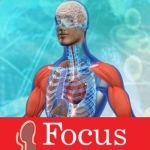
Animated Essential Atlas
Medical and Education
App
The Focus Animated Essential Atlas of Anatomy and Physiology includes a full chapter on: -Cell –...
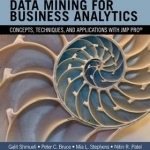
Data Mining for Business Analytics: Concepts, Techniques, and Applications with JMP Pro
Galit Shmueli, Nitin R. Patel, Peter C. Bruce and Mia L. Stephens
Book
Data Mining for Business Analytics: Concepts, Techniques, and Applications with JMP Pro(R) presents...

